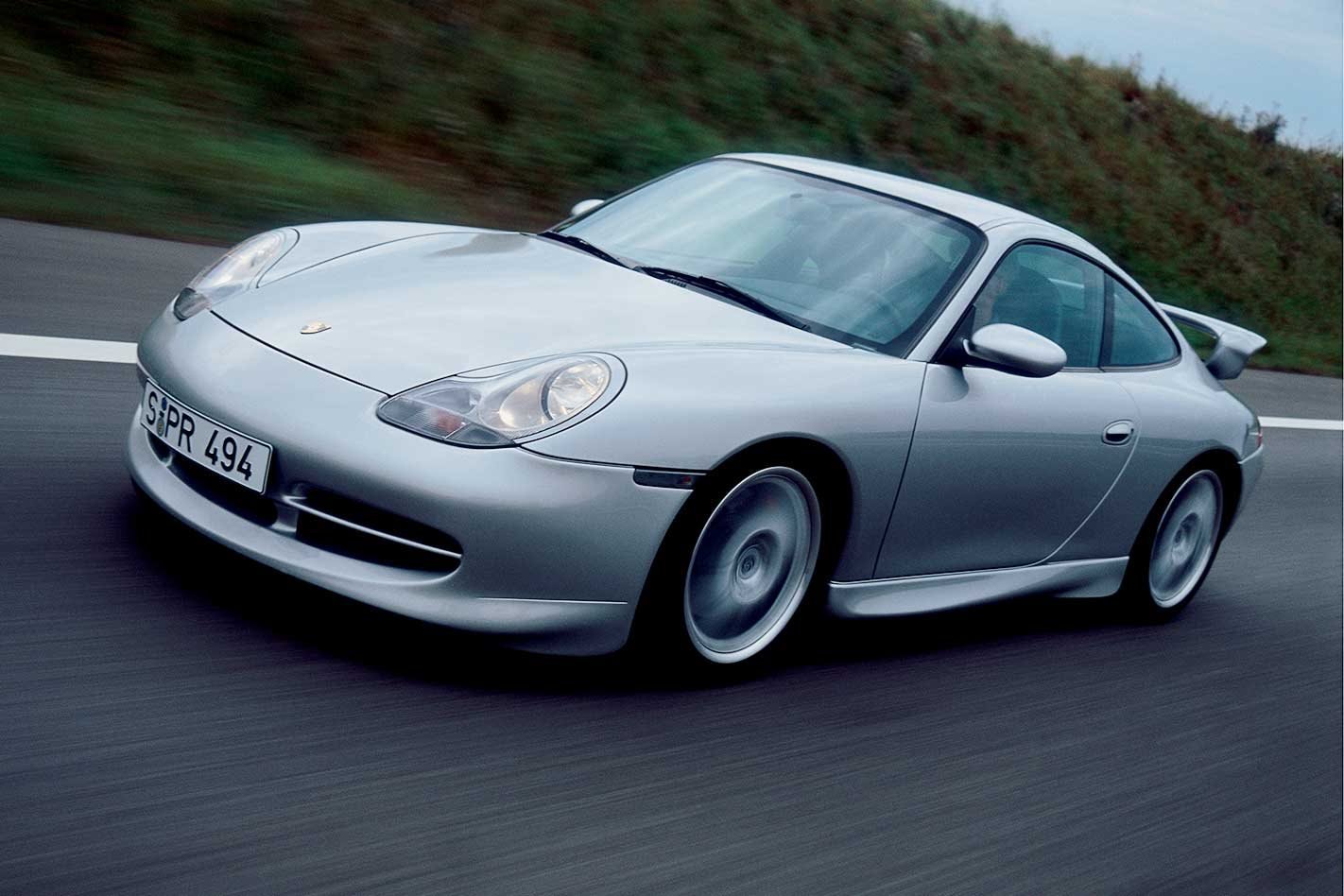Porsche has always made racing specials of its regular road cars, but what cements the 996 GT3’s place here rather than, say, the 964 RS or 993 Carrera RS, is that it started a dynasty. Its release in 2000 began an unbroken run of excellence that culminates today with the 991.2 GT3 RS.
Compared to Porsche’s latest winged warrior, the original GT3 looks more meek than monster. It’s much narrower than its wide-body successors because it uses the standard Carrera 2 body. A stripped-out cabin dropped weight to 1380kg and an optional Clubsport pack shed more kilos by replacing the seats with racing buckets, but an extinguisher and half cage added some. Air-con and a stereo were no-cost options.
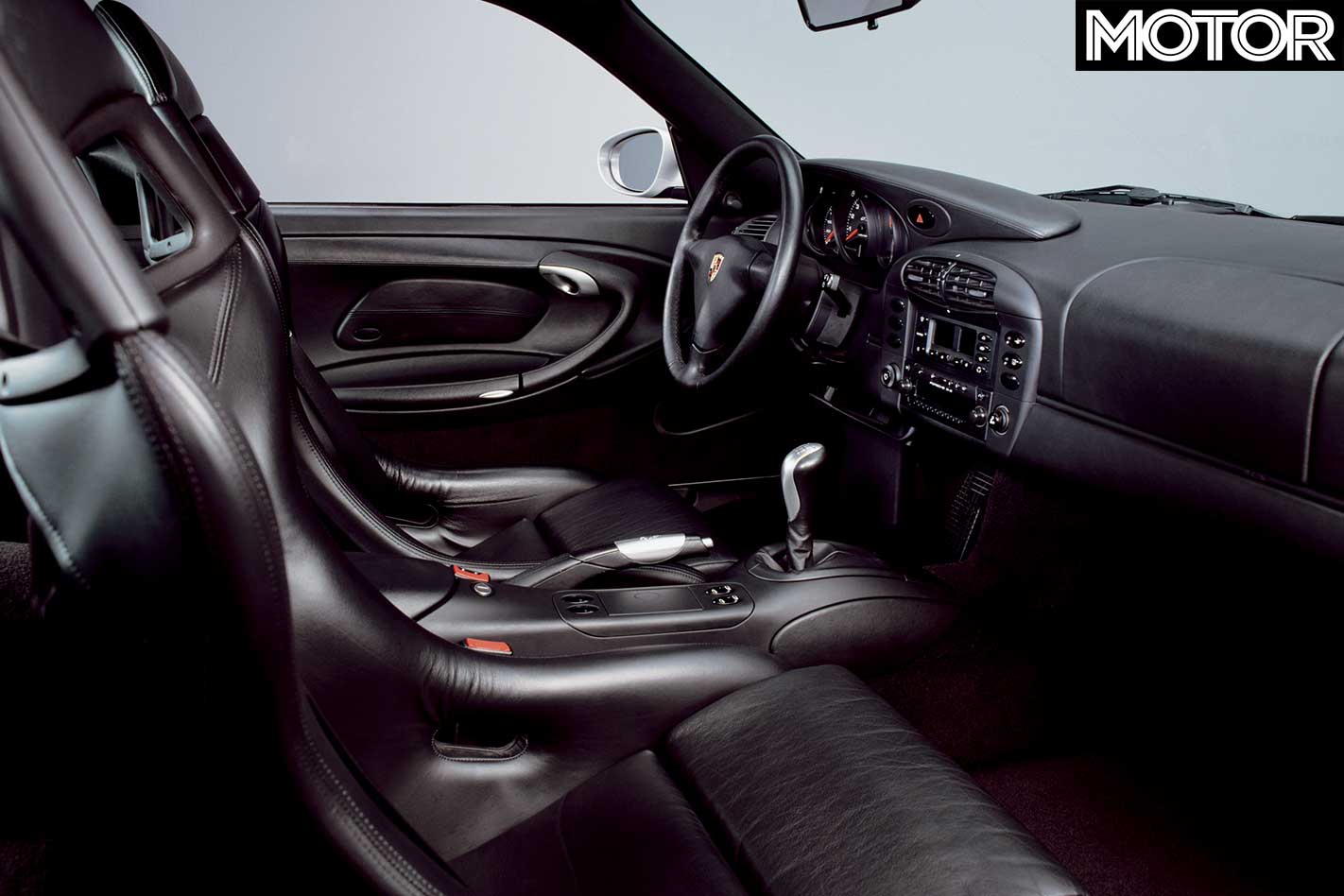
The GT3’s ground-hugging stance and massive spoiler were reasonably extrovert in 2000, but what truly made it special was a production version of the 3.6-litre dry-sumped ‘Mezger’ flat-six, variants of which had powered Porsche’s endurance racers for years, most recently the Le Mans-winning GT1.
It thrived on revs, an 11.7:1 compression ratio delivering 265kW at 7200rpm, 370Nm at 5000rpm, and a 7800rpm cut-out. Incredibly, the latest GT3 has just 400cc extra displacement, yet delivers 103kW and 90Nm more. Still, the 996 could do 100km/h in 4.8sec, 200km/h in 15.6sec, and hit 306km/h.
A six-speed manual, different from the Carrera’s, was the only ’box available, the Clubsport pack also replacing the standard dual-mass flywheel with a lighter single-mass version. Porsche boasted of the ability to quickly change gear ratios and worn parts like synchros, evidence of the car’s intended purpose.

Anti-roll bars were adjustable, springs could be swapped for racing versions, and lowered suspension dropped the centre of gravity by 30mm. Brakes were 330mm rotors with four-piston calipers, while 18-inch wheels wore 225/40 and 285/30 tyres.
Porsche proved the GT3’s prowess at the ’Ring, with Walter Rohrl setting a time of 7min56sec and becoming the first to lap a standard production car there in less than eight minutes.
The 996 also introduced Porsche’s mantra of continual evolution and four years later the 996.2 GT3 arrived, based on the facelifted 911. Its upgraded six received VarioCam variable inlet camshafts, boosting outputs to 280kW at 7400rpm and 385Nm at 5000rpm and raising the rev limit to 8200rpm.
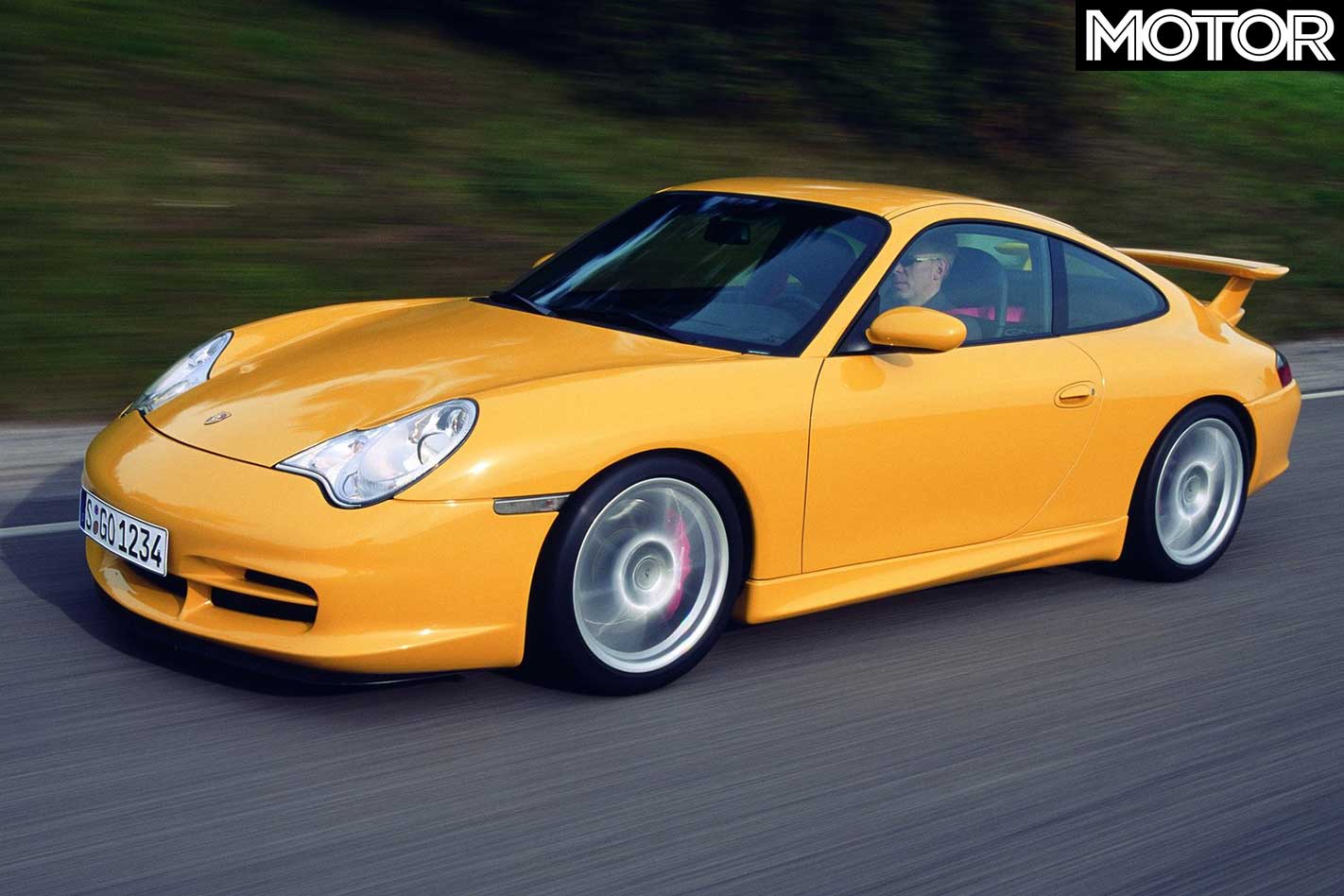
Wheels were a half-inch wider (18 by 8.5, 18 by 11.0), with 10mm wider tyres. Front rotors were 350mm with six-piston calipers and carbon-ceramics were optional. Weight rose to 1380kg, but the 0-100km/h time dropped to 4.5sec and v-max increased to 306km/h, despite shorter fifth and sixth gears.
For the 996-gen swansong, Porsche combined its new motorsport badge with its old one. The GT3 RS was an even more finely honed version, its 50kg diet so severe even badges made way for stickers. The engine was rated the same as the GT3’s, but ram air ducts were said to lift power closer to 300kW.
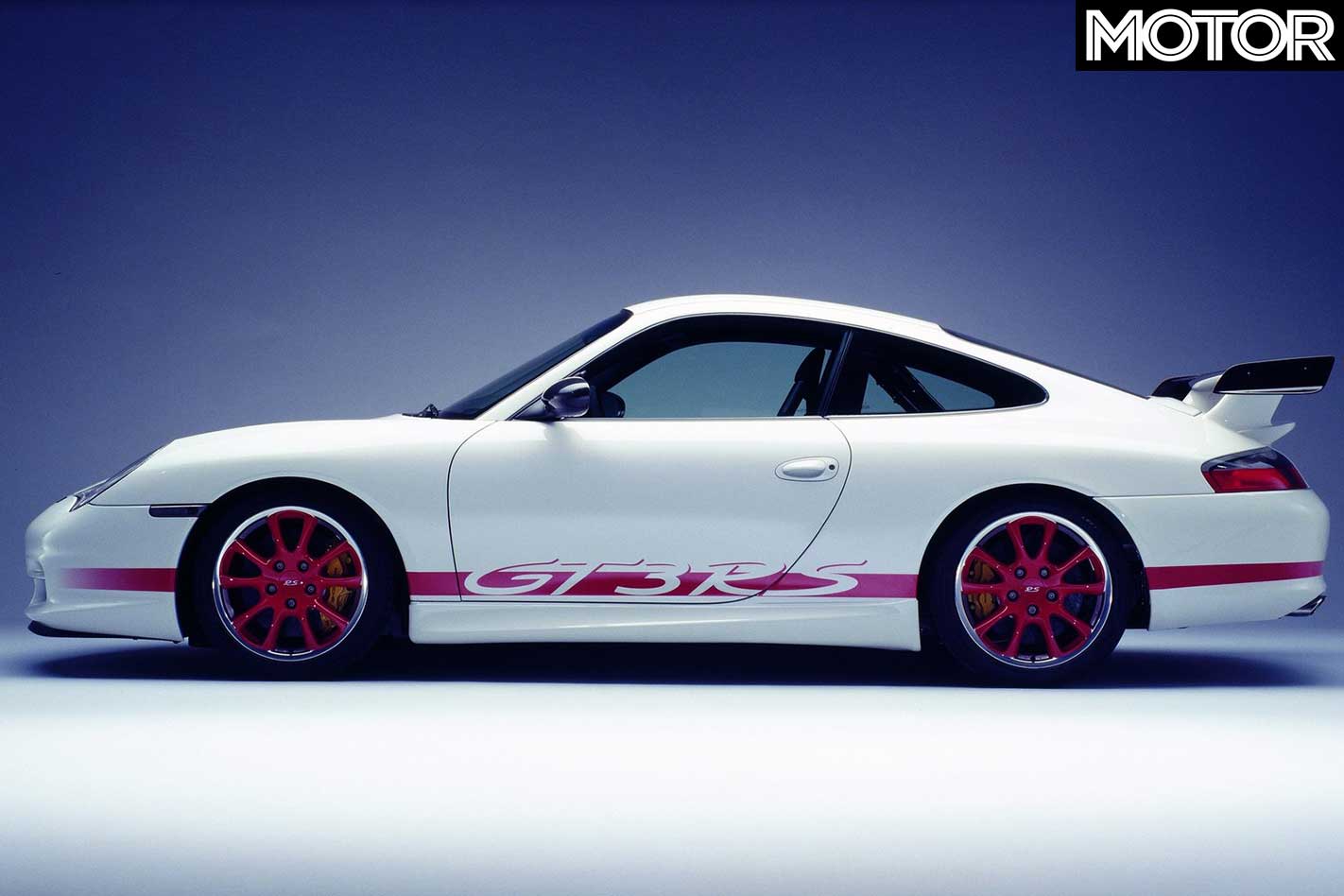
Extra power and less weight cut 0.1sec from the 0-100km/h time and the 0-200km/h time was now just 14sec. Retuned suspension dropped the ride height by 3mm and increased bump and rebound rates by 10 and 15 per cent respectively. Fewer than 700 were built, only around 140 in right-hand drive.
Each subsequent GT3 has been more powerful, faster and yet more liveable, but those who have had the privilege to drive all the generations back-to-back suggest the original is as good as any of its successors when it comes to driving thrills.
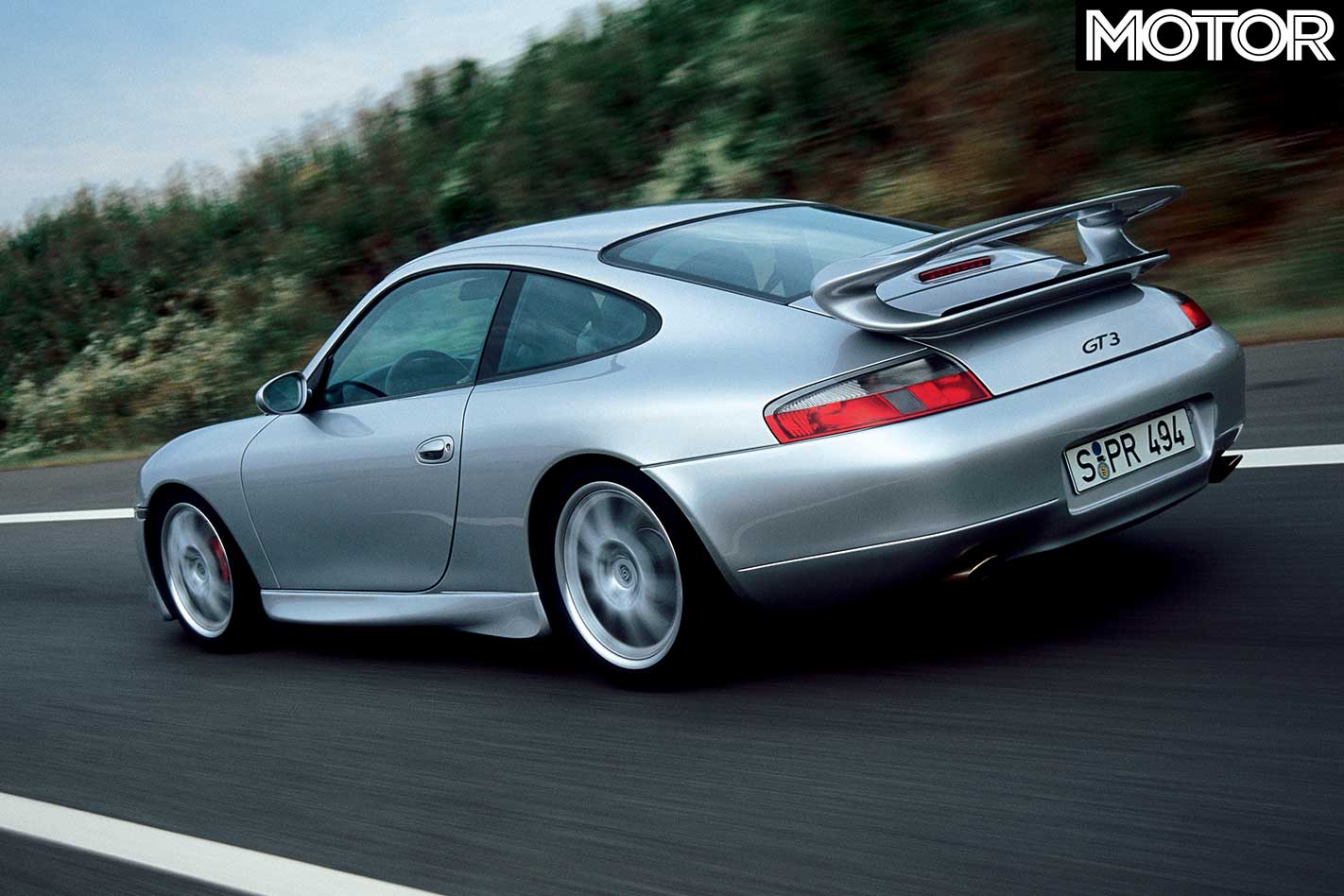
PORSCHE 911 996 GT3 SPECS Year: 2000 Production: 1868 Engine: 3600cc flat-six, rear-mounted Power/Torque: 265kW/370Nm Transmission: 6-speed manual Drive: rear 0-100km/h: 4.9sec Price: AUD$224,600 (new)

